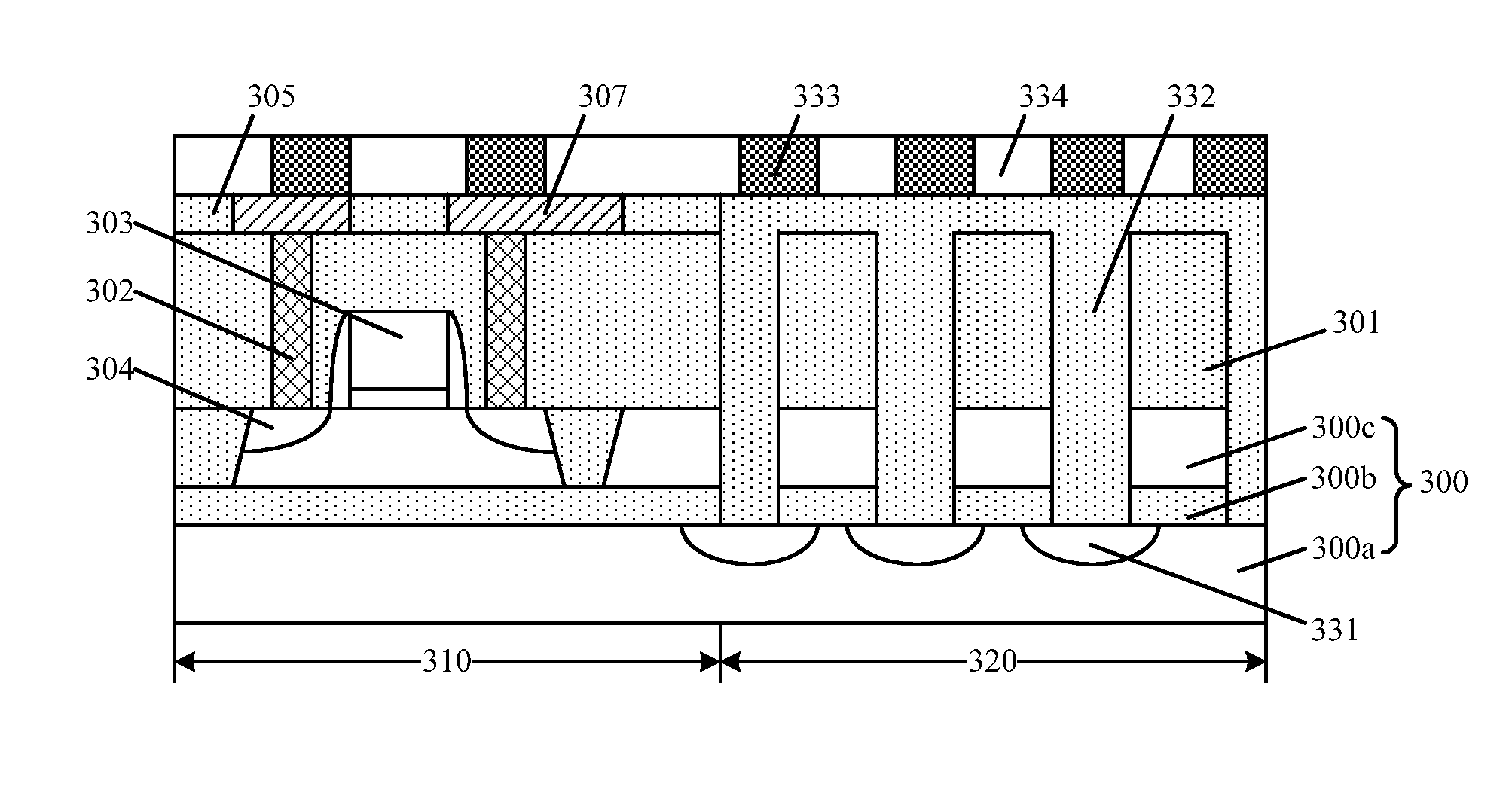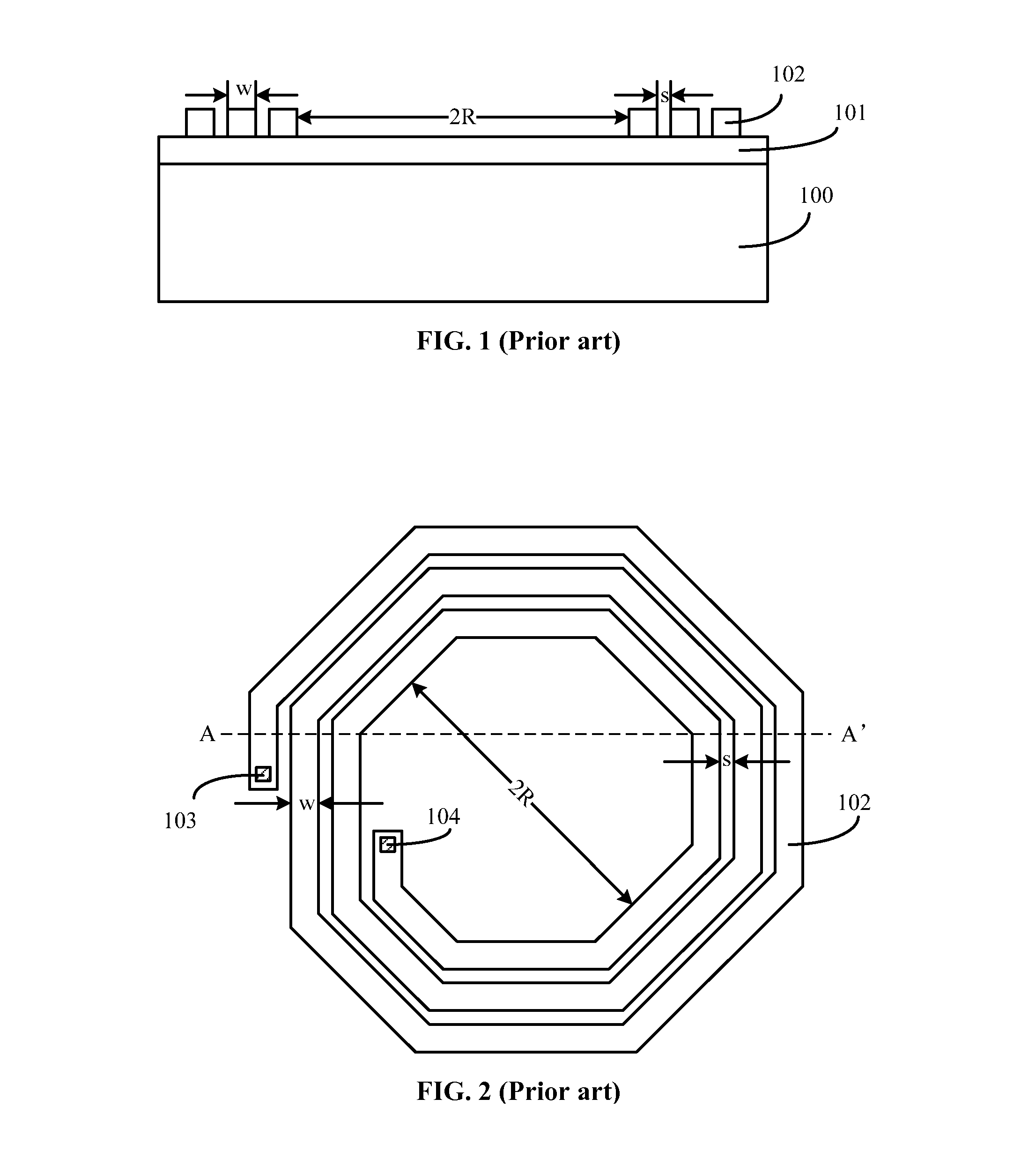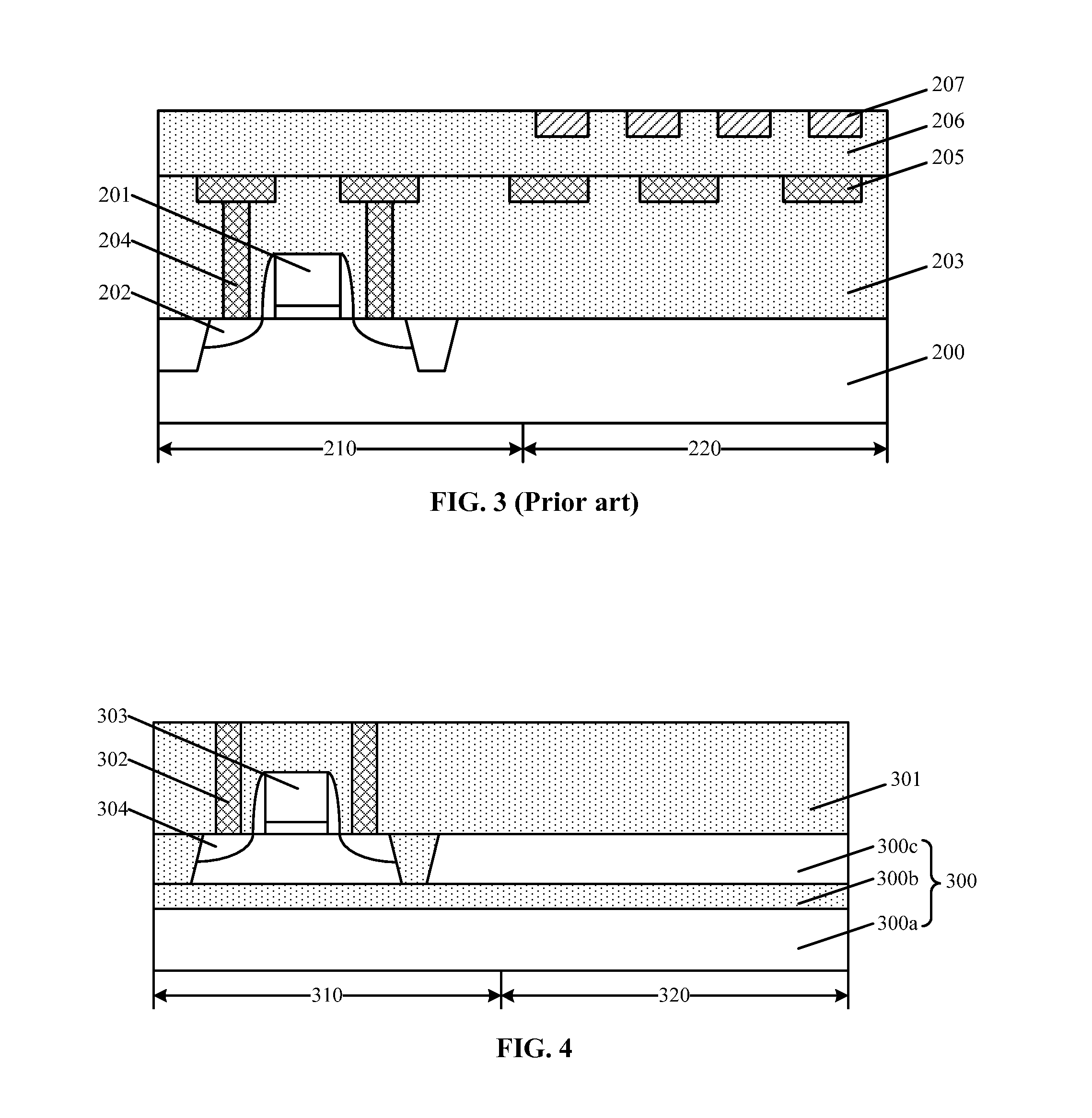Semiconductor device and fabrication method thereof
a technology of semiconductor devices and semiconductor components, applied in semiconductor devices, semiconductor/solid-state device details, inductances, etc., can solve the problems of poor inductance performance, low quality factor q of existing planar inductor, and low integration level of the fabrication process of the planar inductor with the fabrication process of other semiconductor devices
- Summary
- Abstract
- Description
- Claims
- Application Information
AI Technical Summary
Benefits of technology
Problems solved by technology
Method used
Image
Examples
Embodiment Construction
[0016]Reference will now be made in detail to exemplary embodiments of the invention, which are illustrated in the accompanying drawings. Wherever possible, the same reference numbers will be used throughout the drawings to refer to the same or like parts.
[0017]Referring to FIGS. 1˜2, when the inductor is in operation, an electrical current flows in the planar coil 102, the spiral current may be able to generate an electromagnetic field perpendicular to the surface of the semiconductor substrate 100. According to the Lenz's law, the electromagnetic field penetrating through the semiconductor substrate 200 may induce a current, and the direction of the induced current may be opposite to the current in the planar coil 102. The induced current may also be able to generate a magnetic field perpendicular to the planar coil 102. Because the direction of the inducted current may be opposite to the direction of the current in the planar coil 102, the strength of the magnetic field of the in...
PUM
 Login to View More
Login to View More Abstract
Description
Claims
Application Information
 Login to View More
Login to View More - R&D
- Intellectual Property
- Life Sciences
- Materials
- Tech Scout
- Unparalleled Data Quality
- Higher Quality Content
- 60% Fewer Hallucinations
Browse by: Latest US Patents, China's latest patents, Technical Efficacy Thesaurus, Application Domain, Technology Topic, Popular Technical Reports.
© 2025 PatSnap. All rights reserved.Legal|Privacy policy|Modern Slavery Act Transparency Statement|Sitemap|About US| Contact US: help@patsnap.com



